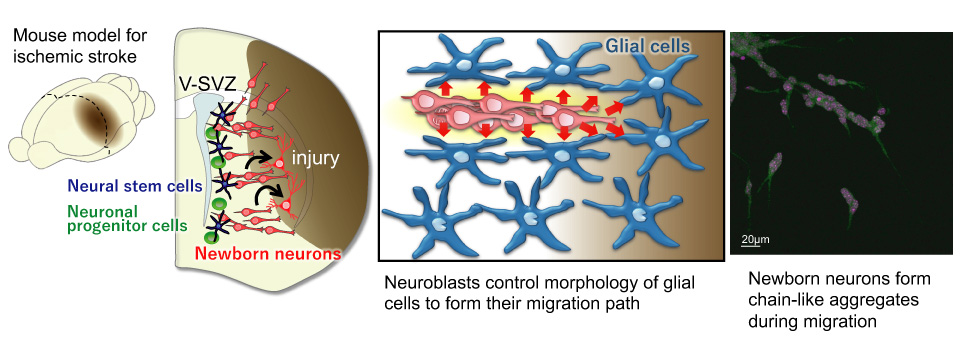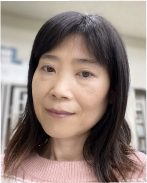Organization
Group A03
Swarm intelligence of newborn neurons: Understanding behaviors and control rules that determine the efficiency of brain regeneration
Research Outline
In the regeneration process, it is important that new cells are properly placed in mature tissues. It is known that in the mammalian brain, the regenerative capacity is low because most of the neurons that play a significant role in the neural circuit are produced during development and rarely in the mature brain. However, in an area called the ventricular-subventricular zone, neurons are produced even in the mature brain. Immature newborn neurons travel long distances at high speeds and are involved in the plasticity and regeneration of neural circuits. A swarm of newborn neurons migrates uniquely, forming an elongated cell clusters that take turns acting as scaffolds that allow surrounding glial cells to create migration pathways. However, we have yet to clarify the mechanism behind the behavior of the heterogeneous cell swarm that shares multiple tasks, such as movement, scaffolding, and pathway creation while transitioning spatiotemporally. This study aims to analyze the behavior of newborn neurons, which have been recorded by live imaging, using a mathematical model with a high degree of abstraction; search for the movement control mechanism as a group and analyze its basic molecular mechanism; and clarify the swarm intelligence movement control mechanism in which newborn neurons contribute to the repair of precise brain functions as a "swarm."

Group A03 members
Project Leader
Naoko Kaneko (Graduate School of Brain Science, Doshisha University)

While working as a clinician at the Department of Neuropsychiatry, I was surprised to learn about newborn neurons that move long distances in the mature brain — this was what inspired me to become a basic researcher. By knowing and controlling the behavior and control rules of newborn neurons that provide cellular-level plasticity to neural circuits, I want to maximize their potential to tackle the difficult task of regenerating brain function.
Educational and Professional Background Naoko Kaneko, M.D., Ph.D.
- 2022-
- Professor, Laboratory of Neuronal Regeneration, Doshisha University Graduate School of Brain Science
- 2009-2013
- Assistant Professor, Department of Developmental and Regenerative Biology, Institute of Molecular Medicine, Nagoya City University Graduate School of Medical Sciences
- 2007-2009
- Post-doc (Inoue Fellow, Inoue Foundation for Science), Department of Developmental and Regenerative Biology, Institute of Molecular Medicine, Nagoya City University Graduate School of Medical Sciences
- 2004-2007
- Visiting Scientist, Department of Physiology (Prof. Hideyuki Okano lab), Keio University School of Medicine
- 2003-2007
- Interdisciplinary Graduate School of Medicine and Engineering, University of Yamanashi. PhD (Doctor of Medical Science) awarded March 2007.
- 1994-2000
- School of Medicine, Faculty of Medicine, University of Yamanashi. MD (Medical Doctor) awarded March 2000.

